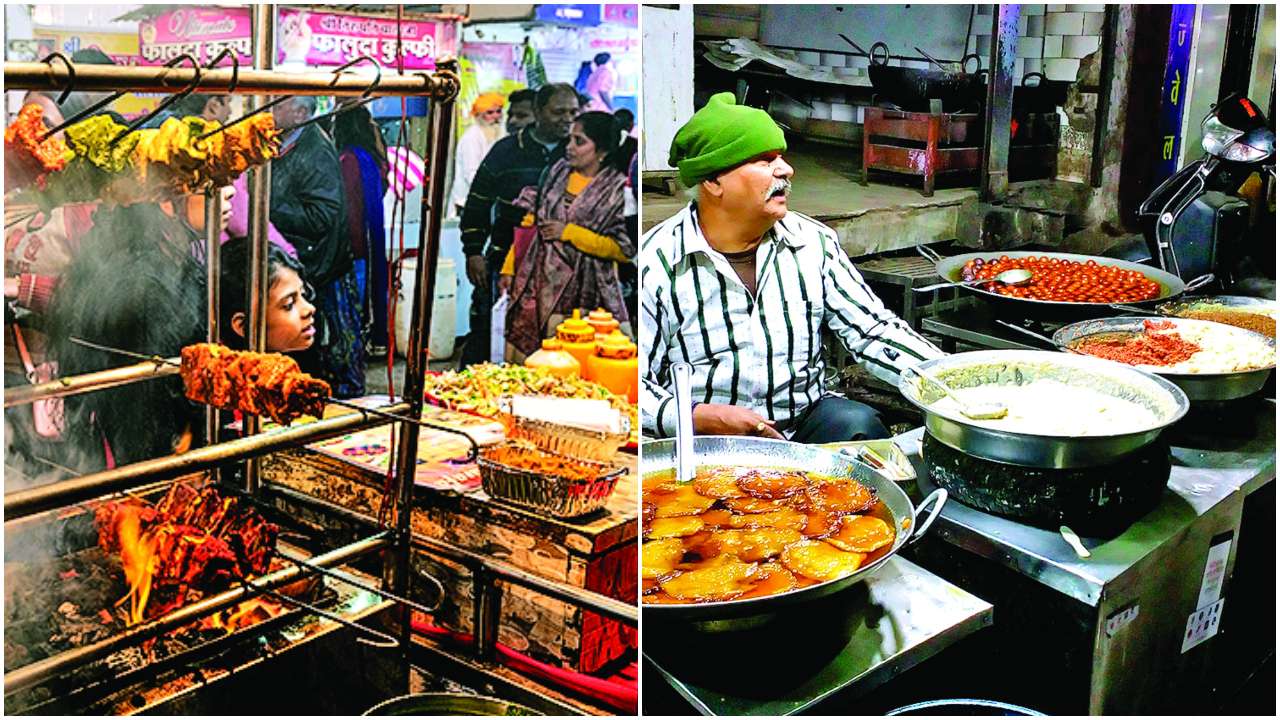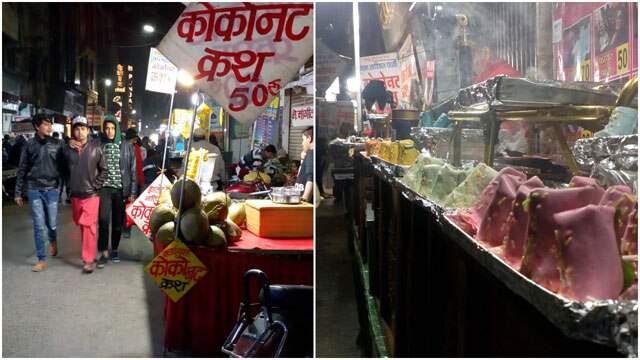
Enter the veg-only lane of Madhya Pradesh (MP), Indore, where the aromas wafting through the night food market are enough to evoke the hunger from the underbelly of the Gods. Sarafa Bazaar, the city’s night food court in the vicinity of the grand Rajwada Palace (1766), is in session. Sans any signboard, the beginning of the market is marked by one or two stray vendors, who greet patrons just as they enter the market, and or, possibly want to escape the intense competition of the big guns at the bazaar. Over sized vehicles entering the narrow lanes receive glares and curses from the pedestrians, who begin trickling in at 10pm and stay till the wee hours of the morning without leaving a trace of a crumb.
The layout of the market is such that majority of the stalls doling savory dishes occupy the end of the lane, while the dessert stalls sit in clusters near the entrance. The idea is for patrons to head right to the end and then slowly make their way to the front as they complete every course. Unlike the stereotypical vegetarian snacks, Indoris dive deep into their vegetarian culture and pack the lanes and bylanes of this bazaar with loads of surprises. The famous bhutte ki kees, served piping hot, is made from corn, spices like ginger and tumeric and garnished with grated coconut and coriander.
MP is often referred to as the playground for North and South cuisines, and at this bazaar, Mumbai’s dahi vada and Delhi’s dahi bhalla becomes dahi bada. Other borrowed cuisines like dosas and tornado potato chips, served on sticks, from South Korea are peppered with numerous spices and look quite appetizing. The Indori signature dish of poha jalebi pairs the Maharashtrian breakfast of flat rice with the sweet from Arabic descent. Solo jalebis, the size of one’s face, and the varying styles of paneer tikkas are also available a la carte.
A couple of stalls named ‘Joshi’s’ are a serious mention at the bazaar as they have patrons lining up halfway down the block. Thus 'Joshi’s Dahi Bada' and 'Joshi’s Chaat' have men behind the counters working almost in robotic synchronisation, filling foil chaat bowls and plates at an insurmountable speed.
For a blend of different textures, there’s always the hot chole tikki chaat with its heavily seasoned chole (gram) that drowns the crispy tikki, hidden below the innumerable layers of chaat. Garadu – another hot and crispy dish served in paper conicals – is fried yams drenched in masala with squirts of lime.

(Coconut Crush, Flavoured pan)
In the midst of trying all the foods doused in spices, there lies the sweet nectar called coconut crush – a thirst-quenching drink made from coconut water, it's milk and malai and ice. Onto the dessert course, there are rows of colourful flavoured paan that line the vendor carts. An ambitious few use tongs to dip a miniscule amount of liquid nitrogen to create the smoke paan. Away from the traditional flavours of magai are those like fire paan, oreo cookie, blueberry and kulfi paan, among countless others that are enough to leave one in a tizzy. Malpua served with rabri – a condensed milk sweet liquid, kulfi and gulab jamuns will satiate those looking for familiar desserts. On the other hand, there’s the underrated matka santra, which has the pulp of an orange pureed with milk cake and rabri and stuffed back into the intact orange peel, and frozen. The end product is a silkier texture of kulfi served with the peel that lends a dash of bitterness to the orange goodness.
It's the multiple blends of vegetarian cuisine, textures and flavours makes the Sarafa experience nothing short of gourmet cooking from these artisans in the heart of central India.